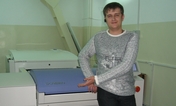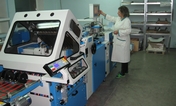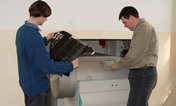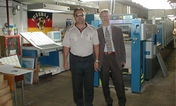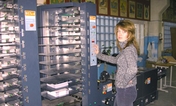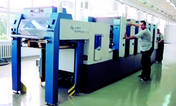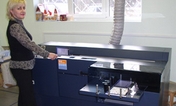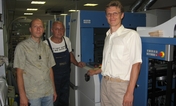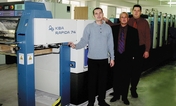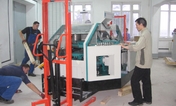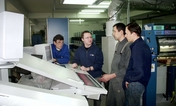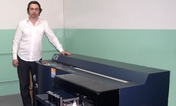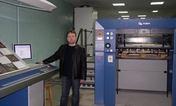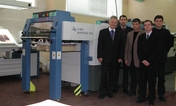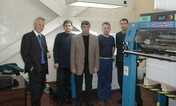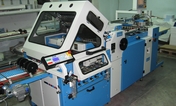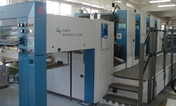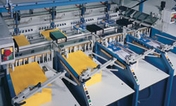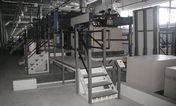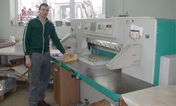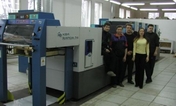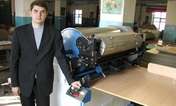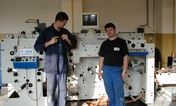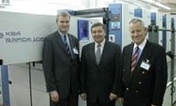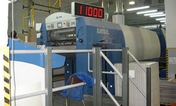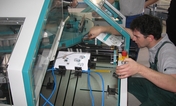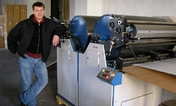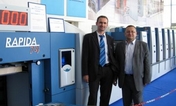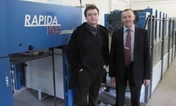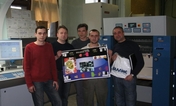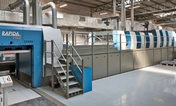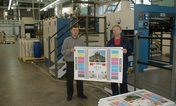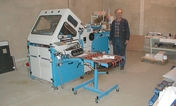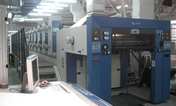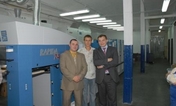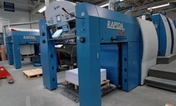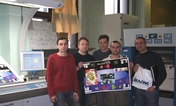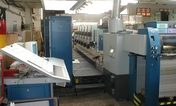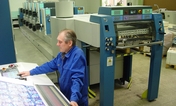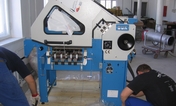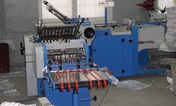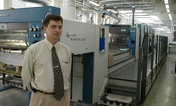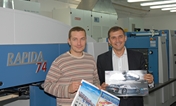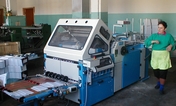Dr. Dirk Schlatterbeck will head the technology division. This role encompasses the overall management and development of our GALACRYL® line, chemicals development, applications engineering, quality control, as well as regulatory affairs and strategic procurement.
Nebojsa Curcic is in charge of the UV development and new business development division. Read the interview with him below. Both division heads manage a team of experts.
Nebojsa Curcic, Head of UV and new business development
Dr. Dirk Schlatterbeck, Head of technology

In conversation with the UV experts
COATING Ticker (CT) sounded out Nebojsa Curcic.
CT: Mr. Curcic, you are the new head of UV & new business development at Schmid Rhyner. What are your goals?
Before I actually start discussing our goals, it is very important to me to express my utmost respect for the achievements of previous generations who helped make Schmid Rhyner the specialist for UV technology. That deserves great respect!
Our entire team is highly committed to upholding and expanding this market position. This includes our innovative strength, the exceptional commitment to service and the technical expertise of our organisation, not to mention the high standard and consistency of quality that our products demonstrate. Apart from technical innovations, which are developed on an ongoing basis, these form the mainstay of our company that our customers can depend upon.
CT: And what are the challenges facing your team?
The needs and demands of the market are subject to significantly quicker change than was the case a few years ago. The resulting diversity of products and the demand for specific solutions in smaller batches will continue as a trend. This requires a high level of flexibility and creativity from all those concerned.
CT: And what factors are you counting on to achieve success?
One of the crucial factors in Schmid Rhyner’s success is the production method and process engineering, which we are constantly developing and adapting for new products. As we manufacture our oligomers ourselves, we retain control of the entire manufacturing process. We are therefore able to keep specifications to very tight tolerances and adapt the properties of the end product to our customers’ requirements right in the initial stages of manufacture. This method of production guarantees us extremely consistent quality.
CT: It is stated again and again that the contact and collaboration with customers is important in development. Do you agree with this? Do you have any particular expectations?
I fully agree with this. It is vital in development that we are familiar with the processes on site. In development it is important to take factors in the process into account that we don’t have in the laboratory. You can only achieve that “outside” in discussions with customers and understand it “live”, when you are at the printing press. Specific projects can only be completed successfully in close cooperation with our partners. Even for this reason alone, it is important for the developers to maintain personal contact with the customer. In a nutshell: quality + service + partnership = sustainability.
CT: The printing industry is currently under great pressure with rising costs. UV coating systems today are more expensive in comparison with other coating systems. Can this higher price still be justified from an economic standpoint?
If only the costs for materials were compared, this would certainly be the case.
However this calculation doesn’t go far enough. We need to compare the costs over the entire value chain, commencing with the expenses for energy and transport, manufacturing and further processing. Emissions also need to be taken into account, and ultimately the superiorquality end product.
In the end, the added value that can be achieved for the end product is the crucial factor in economic efficiency.
CT: But aren’t almost equally high levels of gloss achieved with other coating systems?
Print finishing has long since ceased to be defined “just” by the level of gloss. 80 measured gloss points “with other coating systems” do not have nearly the brilliance and presence of a UV coating in visual terms, with a comparable level of gloss. What appeals to the consumer on an emotional level is the appearance of the packaging and not the results of measurements.
Print finishing is more than just a competition for gloss points. Nonetheless, we are a match for anyone when it comes to the gloss levels for our WESSCO® UV coatings. For instance, in our product portfolio we have a WESSCO® line that was developed specially for porous substrates. These coatings remain on the surface without being absorbed into the substrate, and this helps us to achieve, among other advantages, 10-15 more gloss points than with “standard UV coatings”, or even WESSCO® UV high-gloss coatings, with a gloss level significantly higher than 90 gloss points.
What we are currently observing on the market is an increasing demand for haptic effects or matt/gloss combinations, as a finish. Where structural applications are concerned, no other technology offers a level of finishing, in the true sense of the word, that is comparable to the level achieved with UV technology or EB technology.
CT: In your view, what are the key technical advantages of UV coatings compared with conventional coating systems?
UV technology forms the basis for low-emission coatings and reduction or avoidance of VOC.
I see another advantage in the high economic efficiency thanks to short curing times, high production speed, low energy costs, low application quantities, single component products and the fact that the material is fully recoverable.
Creation of layers that are chemically and mechanically resistant, further processing without delay, quality control, stackability, customising and benefits related to a superior degree of finishing.
CT: Which way is technical development heading?
Compared with conventional technologies, UV technology is still very young.
Radiation curing has become well-established in various industries; today’s market, and that of the future, are therefore unimaginable without it.
The requirement for coating systems without VOC or low in VOC will be at a premium in future too. Low-migration, low-odour and “clean” products will be given high priority in the printing and packaging industry.
CT: What trends do you foresee in the finishing of packaging for foodstuffs?
Priority must be given to consumer protection. Our families, our children and we are all end consumers. We must all be aware of our duty to them and the responsibility we have within the supply chain and live up to this.
Moreover I would venture to say that there is no technology in existence for manufacturing food packaging that is not critical. When we consider conventional technologies that have been in use in the food packaging industry for decades, then it is well-known that primary aromatic amines in the case of laminating adhesives for flexible packaging, or BADGE (Bisphenol A diglycidyl ether) in the case of interior coatings for tinned foods, or plasticisers and monomers in packaging foils, have been an abiding topic of discussion for years, or take the current talks being held about printing inks containing mineral oil. Every technology is subject to very specific regulations. This should be taken into account. Packaging manufacturers who maintain a close dialogue with suppliers and have transparent processes will be in a position to produce food packaging successfully using any technology.
This also applies to UV technology, which has been the focus of some publicity in recent years. Even if incidents from the more recent past have been unfortunate for the market and for UV technology, they have also had a “positive” effect in some respect. The industry has become more sensitive, and communication about potential risks has increased and is more open.
Today we can happily observe that food packaging is again increasingly being finished using UV coatings on account of the advantages, but now more professionally and consistently using LM systems. This is a very vital difference.
CT: And what other irons do you have in the fire?
Schmid Rhyner will shortly be launching a new generation of WESSCO® LM UV coatings on the market. These UV coatings will stand up well to the most critical of analytical tests. These are UV coatings that are based on definitive new developments.
CT: We thank you for the conversation.
Advantages of UV-cured coatings in the opinion of Nebojsa Curcic
- great economic efficiency thanks to shorter curing times
- high production speed
- low energy costs
- low application quantities
- material is fully recoverable
- single component products
- formation of chemically and mechanically resistant layers
- further processing is possible immediately
- stringent quality control
- greater stackability
- faster customisation
- advantages related to the high level of finishing
Source: Coating Ticker, # 8, September 2011

